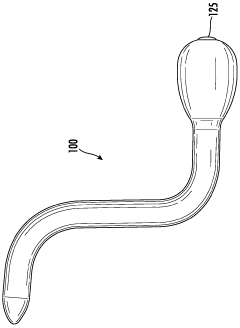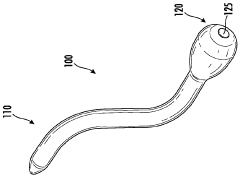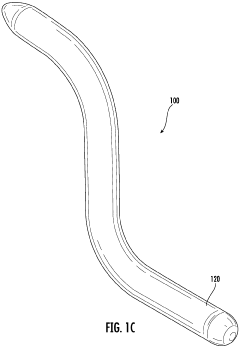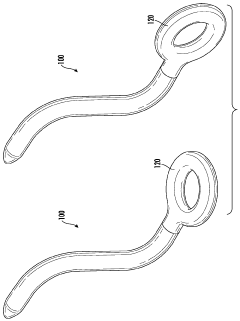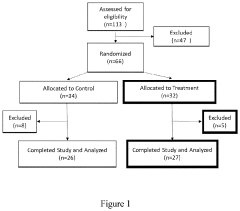How To Fix Hypertonic Pelvic Floor?
Pelvic Floor Dysfunction Overview and Treatment Goals
Pelvic floor dysfunction is a complex condition affecting millions worldwide, with hypertonic pelvic floor being a specific subset characterized by excessive tension in the pelvic floor muscles. This condition can lead to a range of symptoms, including pelvic pain, urinary and fecal incontinence, and sexual dysfunction. Understanding the intricacies of this disorder is crucial for developing effective treatment strategies and improving patient outcomes.
The primary goal in addressing hypertonic pelvic floor is to restore normal muscle function and alleviate associated symptoms. This involves reducing muscle tension, improving flexibility, and retraining the pelvic floor muscles to function optimally. Treatment aims to not only provide symptomatic relief but also to enhance overall pelvic health and quality of life for affected individuals.
A comprehensive approach to treating hypertonic pelvic floor typically involves a combination of physical therapy, behavioral modifications, and in some cases, pharmacological interventions. Physical therapy techniques such as manual therapy, biofeedback, and targeted exercises play a pivotal role in muscle relaxation and retraining. Behavioral modifications may include lifestyle changes, stress management techniques, and dietary adjustments to support pelvic floor health.
Recent technological advancements have introduced innovative treatment modalities, including electromyography-guided therapy and real-time ultrasound imaging for biofeedback. These tools provide more precise assessment and targeted interventions, potentially improving treatment efficacy. Additionally, emerging research in neuromodulation techniques shows promise in addressing pelvic floor dysfunction through direct neural stimulation.
The evolution of treatment strategies for hypertonic pelvic floor reflects a growing understanding of the condition's multifaceted nature. Interdisciplinary approaches involving urogynecologists, physical therapists, and pain specialists are becoming increasingly common, recognizing the need for holistic patient care. This collaborative model aims to address not only the physical symptoms but also the psychological and social impacts of the condition.
As research in this field progresses, there is a growing emphasis on personalized treatment plans tailored to individual patient needs. This approach takes into account factors such as the severity of symptoms, underlying causes, and patient preferences. The goal is to develop more effective, targeted interventions that can provide long-term relief and improve overall pelvic floor function.
In conclusion, addressing hypertonic pelvic floor requires a comprehensive understanding of pelvic floor dysfunction and a multifaceted treatment approach. The ongoing development of innovative therapies and diagnostic tools, coupled with a focus on personalized care, holds promise for improved outcomes in managing this challenging condition.
Market Analysis for Pelvic Floor Therapy Solutions
The global market for pelvic floor therapy solutions has been experiencing significant growth in recent years, driven by increasing awareness of pelvic floor disorders and the growing demand for non-invasive treatment options. The market for hypertonic pelvic floor treatments, in particular, is expanding rapidly as more individuals seek relief from symptoms such as pelvic pain, urinary urgency, and sexual dysfunction.
Market research indicates that the pelvic floor therapy devices market is expected to continue its upward trajectory, with a compound annual growth rate (CAGR) projected to be in the high single digits over the next five years. This growth is attributed to factors such as the aging population, rising prevalence of pelvic floor disorders, and advancements in technology that have led to more effective and user-friendly treatment options.
The market for pelvic floor therapy solutions can be segmented into various categories, including electrical stimulation devices, biofeedback systems, vaginal weights, and pelvic floor exercisers. Among these, electrical stimulation devices and biofeedback systems are gaining particular traction in the treatment of hypertonic pelvic floor conditions. These technologies offer patients the ability to visualize and control their pelvic floor muscle activity, leading to improved outcomes and patient satisfaction.
Geographically, North America currently holds the largest market share in the pelvic floor therapy solutions industry, followed by Europe. However, the Asia-Pacific region is expected to witness the fastest growth in the coming years, driven by increasing healthcare expenditure, growing awareness of pelvic health, and improving access to advanced medical technologies.
Key market players in the pelvic floor therapy solutions space include established medical device companies as well as innovative startups. These companies are investing heavily in research and development to introduce novel technologies and improve existing products. Collaborations between healthcare providers and technology companies are also becoming more common, leading to the development of integrated treatment solutions that combine devices, software, and personalized therapy programs.
The market is also seeing a shift towards home-based treatment options, particularly in light of recent global events that have accelerated the adoption of telemedicine and remote healthcare solutions. This trend is expected to continue, with an increasing number of patients seeking convenient and private treatment options for hypertonic pelvic floor conditions.
Despite the positive growth outlook, challenges remain in the market. These include the need for increased education and awareness among both patients and healthcare providers, reimbursement issues in some regions, and the ongoing requirement for clinical evidence to support the efficacy of various treatment modalities. Addressing these challenges will be crucial for sustained market growth and improved patient outcomes in the field of pelvic floor therapy.
Current Challenges in Hypertonic Pelvic Floor Management
The management of hypertonic pelvic floor presents several significant challenges in current clinical practice. One of the primary obstacles is the complex nature of the condition itself, which often involves a multifaceted interplay of physiological, psychological, and behavioral factors. This complexity makes accurate diagnosis and effective treatment particularly challenging.
Diagnostic difficulties pose a substantial hurdle in addressing hypertonic pelvic floor. The symptoms can be nonspecific and overlap with other pelvic disorders, leading to potential misdiagnosis or delayed treatment. Furthermore, the lack of standardized diagnostic criteria and assessment tools contributes to inconsistencies in identifying and evaluating the condition across different healthcare settings.
Treatment approaches for hypertonic pelvic floor remain largely empirical, with limited high-quality evidence supporting specific interventions. The absence of a universally accepted treatment protocol results in variability in care and potentially suboptimal outcomes for patients. Additionally, the individualized nature of the condition necessitates tailored treatment plans, which can be time-consuming and resource-intensive to develop and implement.
Patient adherence to long-term management strategies presents another significant challenge. Many interventions, such as pelvic floor relaxation exercises and lifestyle modifications, require consistent patient engagement and commitment. Maintaining motivation and compliance over extended periods can be difficult, particularly when improvements may be gradual or fluctuating.
The multidisciplinary nature of hypertonic pelvic floor management adds another layer of complexity. Effective treatment often requires coordination between various healthcare professionals, including urologists, gynecologists, physiotherapists, and mental health specialists. Ensuring seamless communication and integrated care across these disciplines can be challenging in many healthcare systems.
Limited awareness and understanding of hypertonic pelvic floor among both healthcare providers and the general public contribute to underdiagnosis and delayed treatment. This knowledge gap can lead to patients experiencing prolonged symptoms before receiving appropriate care, potentially exacerbating the condition and complicating management.
Lastly, the psychosocial impact of hypertonic pelvic floor on patients' quality of life is often underestimated and inadequately addressed in current management approaches. The intimate nature of the condition can lead to embarrassment, social isolation, and mental health issues, which may not be fully captured or addressed in traditional treatment paradigms.
Addressing these challenges requires a concerted effort to improve diagnostic accuracy, develop evidence-based treatment protocols, enhance patient education and support, and foster interdisciplinary collaboration in the management of hypertonic pelvic floor.
Existing Therapies for Hypertonic Pelvic Floor
01 Electrical stimulation for pelvic floor treatment
Electrical stimulation techniques are used to treat hypertonic pelvic floor conditions. This approach involves applying controlled electrical impulses to the pelvic floor muscles, helping to relax and retrain them. The treatment can be delivered through various devices, including intravaginal or transdermal electrodes, and may be combined with biofeedback for improved outcomes.- Electrical stimulation for pelvic floor treatment: Electrical stimulation techniques are used to treat hypertonic pelvic floor conditions. This approach involves applying controlled electrical impulses to the pelvic floor muscles, helping to relax and retrain them. The treatment can be delivered through various devices, including intravaginal or transdermal electrodes, and may be combined with biofeedback for improved outcomes.
- Mechanical devices for pelvic floor relaxation: Specialized mechanical devices are designed to aid in relaxing hypertonic pelvic floor muscles. These may include dilators, pessaries, or other insertable devices that provide gentle stretching or support to the pelvic floor. Some devices incorporate features like vibration or heat therapy to enhance muscle relaxation and improve blood flow to the area.
- Pharmaceutical interventions for muscle relaxation: Pharmaceutical treatments are used to address hypertonic pelvic floor conditions. These may include muscle relaxants, anti-spasmodics, or other medications designed to reduce muscle tension and alleviate associated symptoms. Topical or systemic administration methods may be employed, depending on the specific medication and treatment approach.
- Biofeedback and neuromuscular re-education: Biofeedback techniques and neuromuscular re-education are employed to treat hypertonic pelvic floor conditions. These methods involve using sensors to provide real-time feedback on muscle activity, helping patients learn to consciously relax and control their pelvic floor muscles. This approach often incorporates visual or auditory cues to guide patients through relaxation exercises.
- Integrated multi-modal treatment approaches: Comprehensive treatment plans for hypertonic pelvic floor conditions often involve a combination of multiple modalities. These integrated approaches may include a mix of physical therapy, electrical stimulation, biofeedback, pharmaceutical interventions, and lifestyle modifications. The goal is to address the condition from multiple angles, providing a more effective and personalized treatment strategy.
02 Mechanical devices for pelvic floor relaxation
Specialized mechanical devices are designed to address hypertonic pelvic floor conditions. These may include dilators, pessaries, or other insertable devices that provide gentle stretching or support to the pelvic floor muscles. Some devices incorporate features like vibration or heat therapy to enhance muscle relaxation and improve blood flow to the area.Expand Specific Solutions03 Pharmaceutical interventions for muscle relaxation
Pharmaceutical approaches are used to manage hypertonic pelvic floor conditions. This may involve the use of muscle relaxants, anti-spasmodics, or other medications that can help reduce muscle tension in the pelvic floor. These treatments can be administered orally, topically, or through localized injections, depending on the specific medication and patient needs.Expand Specific Solutions04 Biofeedback and neuromuscular re-education techniques
Biofeedback and neuromuscular re-education techniques are employed to treat hypertonic pelvic floor conditions. These methods involve using sensors to provide real-time feedback on muscle activity, helping patients learn to consciously relax their pelvic floor muscles. This approach often incorporates visual or auditory cues and may be combined with other therapies for comprehensive treatment.Expand Specific Solutions05 Non-invasive external therapies
Non-invasive external therapies are utilized for managing hypertonic pelvic floor conditions. These may include techniques such as transcutaneous electrical nerve stimulation (TENS), magnetic field therapy, or targeted heat or cold applications. Such approaches aim to promote muscle relaxation and reduce pain without the need for internal interventions, making them suitable for a wide range of patients.Expand Specific Solutions
Key Players in Pelvic Health Technology
The hypertonic pelvic floor treatment market is in a growth phase, driven by increasing awareness and an aging population. The global market size is expanding, with projections indicating significant growth in the coming years. Technologically, the field is advancing rapidly, with a mix of established and emerging solutions. Companies like Boston Scientific, Medtronic, and Caldera Medical are at the forefront, offering advanced medical devices and therapies. Newer entrants such as FemPulse and PARTURA Medical are introducing innovative approaches, while research institutions like the Indian Institute of Science and Peking University People's Hospital are contributing to technological advancements. The competitive landscape is diverse, with a blend of multinational corporations, specialized medical device companies, and academic institutions driving innovation in this growing field.
Boston Scientific Scimed, Inc.
Medtronic, Inc.
Innovative Techniques in Pelvic Floor Rehabilitation
- A 'smart' pelvic floor physical therapy device with sensors and feedback mechanisms, including a handle and body portion with integrated sensors for real-time data collection and feedback, connected to an app for guided therapy, providing visual and auditory cues to ensure accurate positioning and pressure application during treatment.
- A specially formulated dietary supplement containing zinc, leucine, and omega-3 fatty acids, administered orally, which promotes the recovery and regeneration of pelvic floor muscles, particularly after vaginal delivery, by improving muscle strength and reducing the risk of prolapse and incontinence.
Regulatory Framework for Pelvic Health Devices
The regulatory framework for pelvic health devices plays a crucial role in ensuring the safety and efficacy of treatments for hypertonic pelvic floor conditions. In the United States, the Food and Drug Administration (FDA) oversees the approval and regulation of medical devices, including those used for pelvic health. These devices are typically classified as Class II medical devices, requiring a 510(k) premarket notification submission to demonstrate substantial equivalence to a legally marketed predicate device.
The European Union employs the Medical Device Regulation (MDR) to govern pelvic health devices. Under this framework, manufacturers must comply with stringent requirements for clinical evaluation, risk management, and post-market surveillance. The CE marking process ensures that devices meet essential safety and performance requirements before they can be marketed within the EU.
In Canada, Health Canada regulates pelvic health devices through the Medical Devices Regulations under the Food and Drugs Act. Manufacturers must obtain a Medical Device License before selling their products in the Canadian market, which involves demonstrating safety, effectiveness, and quality standards compliance.
The regulatory landscape for pelvic health devices also encompasses quality management systems. Manufacturers are typically required to implement and maintain a quality management system that complies with ISO 13485 standards, ensuring consistent production of safe and effective devices.
Clinical trials play a significant role in the regulatory process for pelvic health devices. Regulatory bodies often require robust clinical data to support claims of safety and efficacy. This may involve conducting randomized controlled trials or other appropriate study designs to demonstrate the device's performance in treating hypertonic pelvic floor conditions.
Post-market surveillance is another critical aspect of the regulatory framework. Manufacturers are required to monitor the performance of their devices after market introduction, report adverse events, and implement corrective actions when necessary. This ongoing vigilance helps ensure the continued safety and effectiveness of pelvic health devices throughout their lifecycle.
As the field of pelvic health continues to evolve, regulatory bodies are adapting their frameworks to address emerging technologies and treatment modalities. This includes considerations for software as a medical device (SaMD) and artificial intelligence-enabled devices, which may require specialized regulatory approaches to ensure their safety and effectiveness in managing hypertonic pelvic floor conditions.
Patient Education and Self-Management Strategies
Patient education and self-management strategies play a crucial role in addressing hypertonic pelvic floor issues. Effective management begins with a comprehensive understanding of the condition and its impact on daily life. Patients should be educated about the anatomy and function of the pelvic floor muscles, emphasizing the importance of proper muscle tension and relaxation. This knowledge forms the foundation for successful self-management techniques.
A key component of patient education is teaching proper breathing techniques. Diaphragmatic breathing, also known as belly breathing, can help relax the pelvic floor muscles and reduce tension. Patients should be instructed to practice this technique regularly, focusing on deep, slow breaths that expand the abdomen rather than the chest.
Relaxation exercises are another essential aspect of self-management. Patients can be taught progressive muscle relaxation, where they systematically tense and relax different muscle groups throughout the body. This practice helps increase body awareness and promotes overall muscle relaxation, including the pelvic floor.
Gentle stretching exercises targeting the pelvic area, hips, and lower back can also be beneficial. These exercises help improve flexibility and reduce muscle tension. Patients should be provided with clear instructions and visual aids to ensure proper form and technique.
Lifestyle modifications are an integral part of managing hypertonic pelvic floor. Patients should be advised on proper posture, especially during prolonged sitting or standing. Ergonomic adjustments to workstations and daily activities can help reduce unnecessary strain on the pelvic floor muscles.
Stress management techniques are crucial, as stress can exacerbate muscle tension. Patients can be introduced to mindfulness meditation, guided imagery, or other relaxation methods that suit their preferences and lifestyles.
Self-massage techniques can be taught to patients to help release tension in the pelvic area. This may include gentle external massage of the lower abdomen and inner thighs, as well as the use of tools like foam rollers or tennis balls for myofascial release.
Patients should also be educated about the importance of proper hydration and a balanced diet in maintaining overall muscle health. Avoiding bladder irritants, such as caffeine and alcohol, may be recommended to reduce pelvic floor tension.
Regular physical activity, tailored to the individual's capabilities and preferences, should be encouraged. Low-impact exercises like walking, swimming, or yoga can help improve overall muscle function and reduce tension.
Finally, patients should be empowered to track their symptoms and progress. Providing tools such as symptom diaries or mobile apps can help patients identify triggers, monitor improvements, and stay motivated in their self-management journey.
